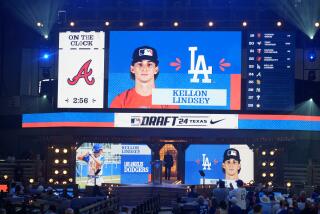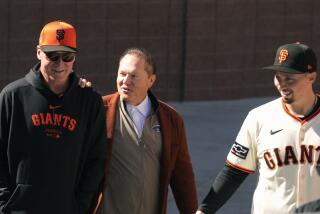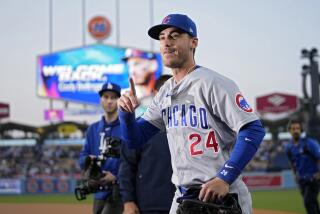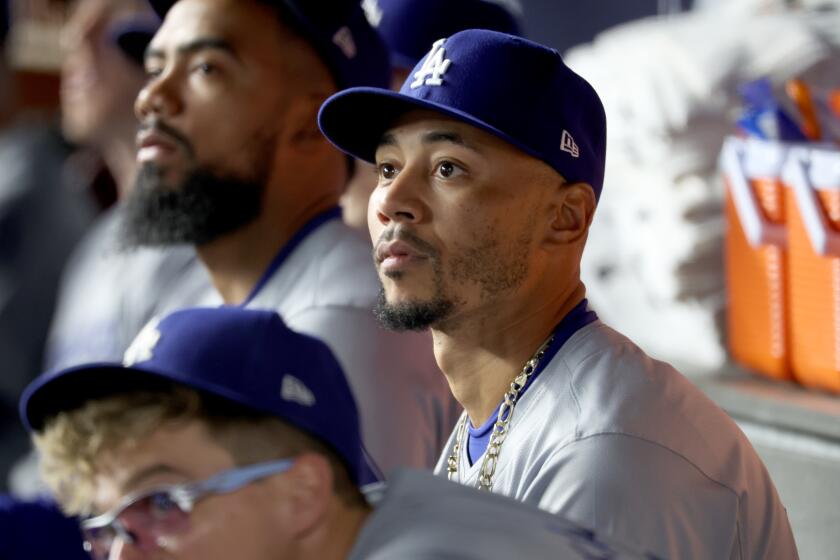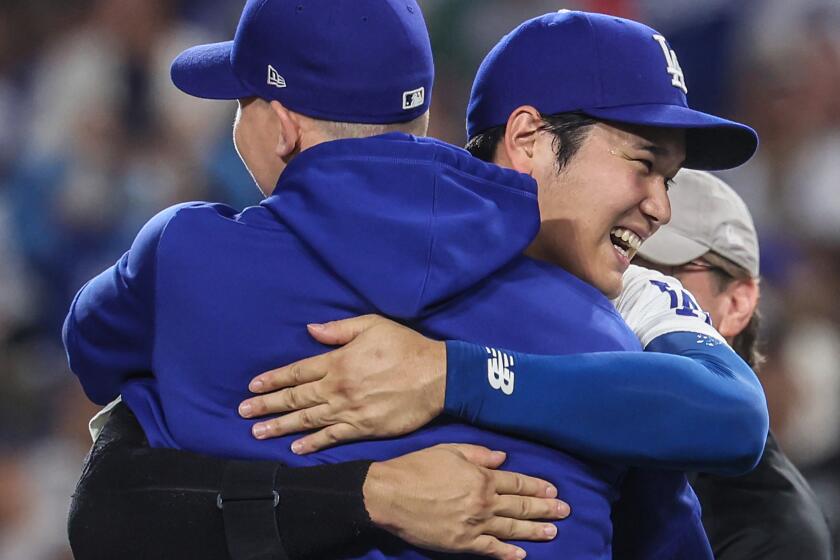Cody Bellinger, Dodgers’ latest can’t-miss kid, has been right on the mark
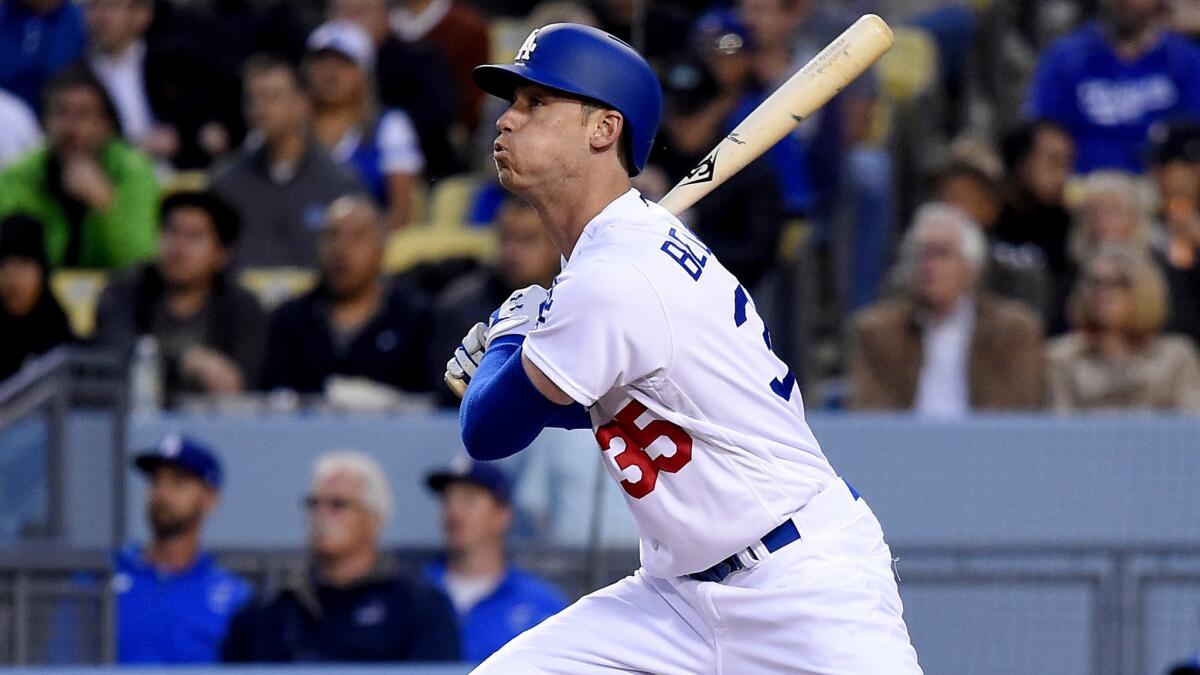
Reporting from Denver — On April 27, after his third day in the major leagues, Cody Bellinger received a text message from the general manager who drafted him.
His first series had not gone well. His lone hit was an accidental infield single. He struck out in nearly half his at-bats. He looked overmatched, more project than prodigy, a 21-year-old guessing and flailing in San Francisco.
“Don’t forget, have great confidence,” Ned Colletti wrote. “You will do very well. You adjust better than anybody.”
The response was sheepish but resolute. “I’ll get back on track soon, don’t worry,” Bellinger replied.
He was right. Any fears were unfounded.
Bellinger finished his first week by hitting two home runs in the same game. In his second week, he homered three more times and became the first Dodger chosen as National League player of the week since 2015. By his third week, he was batting cleanup and the fans at Dodger Stadium chanted his name.
“Pretty impressive, huh?” shortstop Corey Seager said. “It has not been a bad three weeks for him. But everybody knew he could do this.”
The highlights fit into a tidy reel. There was the bases-clearing triple against San Francisco. There was the grand slam on a chest-high fastball in San Diego. There was the game-tying single against Pittsburgh’s left-handed closer.
The footage grows by the day. Bellinger launched his seventh home run on Friday night at Coors Field to claim the team lead. Heading into Saturday’s games, his 1.117 on-base plus slugging percentage ranked eighth in the major leagues among hitters with at least 60 plate appearances.
Cody wasn’t very big, but he had a beautiful swing. And he was a baseball rat.
— Mike Woods, Chandler (Ariz.) Hamilton High baseball coach
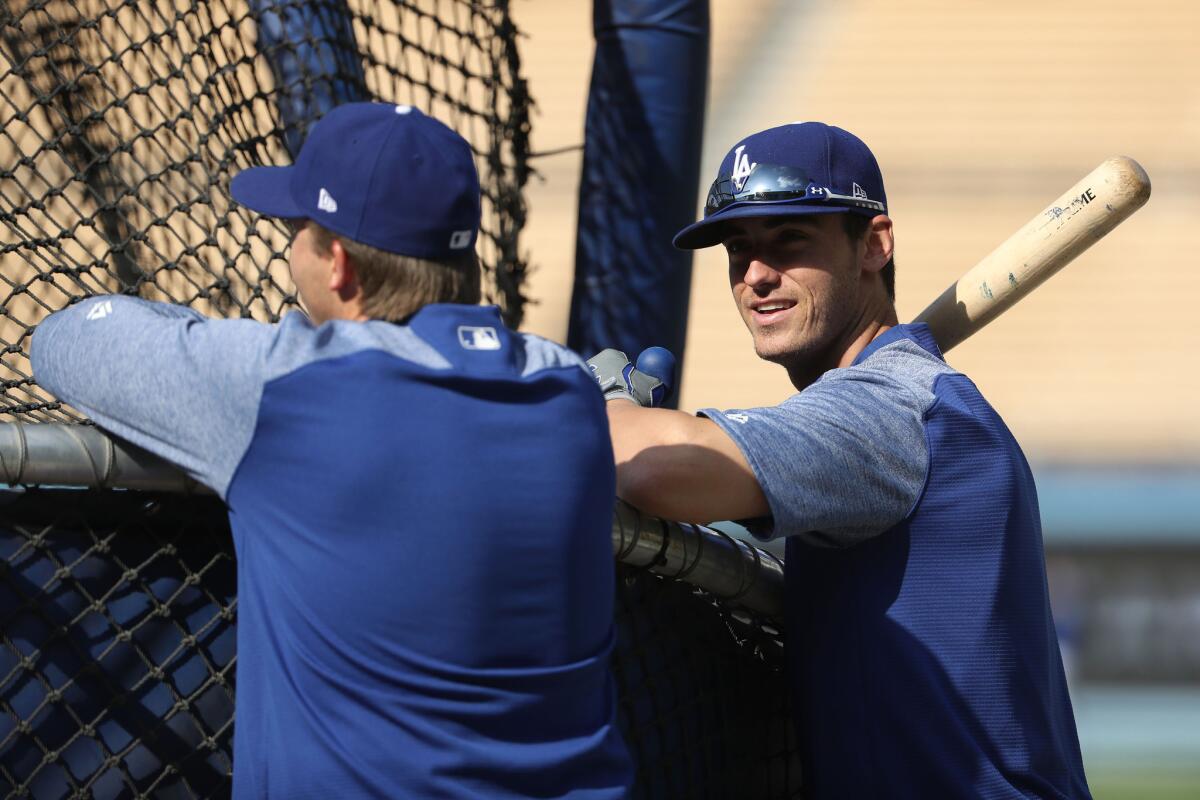
Bellinger can play all three outfield positions in addition to first base. He possesses enough speed to steal bases and enough arm strength to dissuade runners from testing him. A left-handed hitter, he has homered off left-handed pitchers and right-handed pitchers. He can disarm defensive shifts with bunts. In three weeks, he has become a vital member of manager Dave Roberts’ lineup.
His swing twins the grace of clean mechanics with the specter of violence. He maximizes his effort with each hack. He knows no other way, so he attacks opposing pitchers with “the intent to punish the baseball,” director of player development Gabe Kapler said. “To drive the [heck] out of the baseball.”
Said Roberts: “When he swings that bat, something really exciting can happen.”
Bellinger represents a bridge between the two most recent leadership groups of the franchise. Acquired during Colletti’s regime, after hitting only one home run during his senior year in high school, Bellinger blossomed into a slugging force in the player development system built by president of baseball operations Andrew Friedman.
Bellinger began 2017 as Baseball America’s No. 7 prospect. His time as a prospect appears over.
Roberts identified the formula that makes Bellinger unique. He combines elite talent with uncommon knowledge handed down by his father. Clay Bellinger scrapped for a decade in the minor leagues before the New York Yankees called him up as a utility man in 1999. He clung to the roster for three seasons. In Roberts’ eyes, Clay transferred that gritty ethos to his son.
The Yankees released Clay after the 2001 season. He appeared in two games for the Angels in 2002. He spent the next two seasons in the minors, at Fresno and Ottawa, before walking away. The family settled in the suburbs of Phoenix, where Clay started offering hitting lessons. Some of his pupils played for Mike Woods’ team at Hamilton High in Chandler.
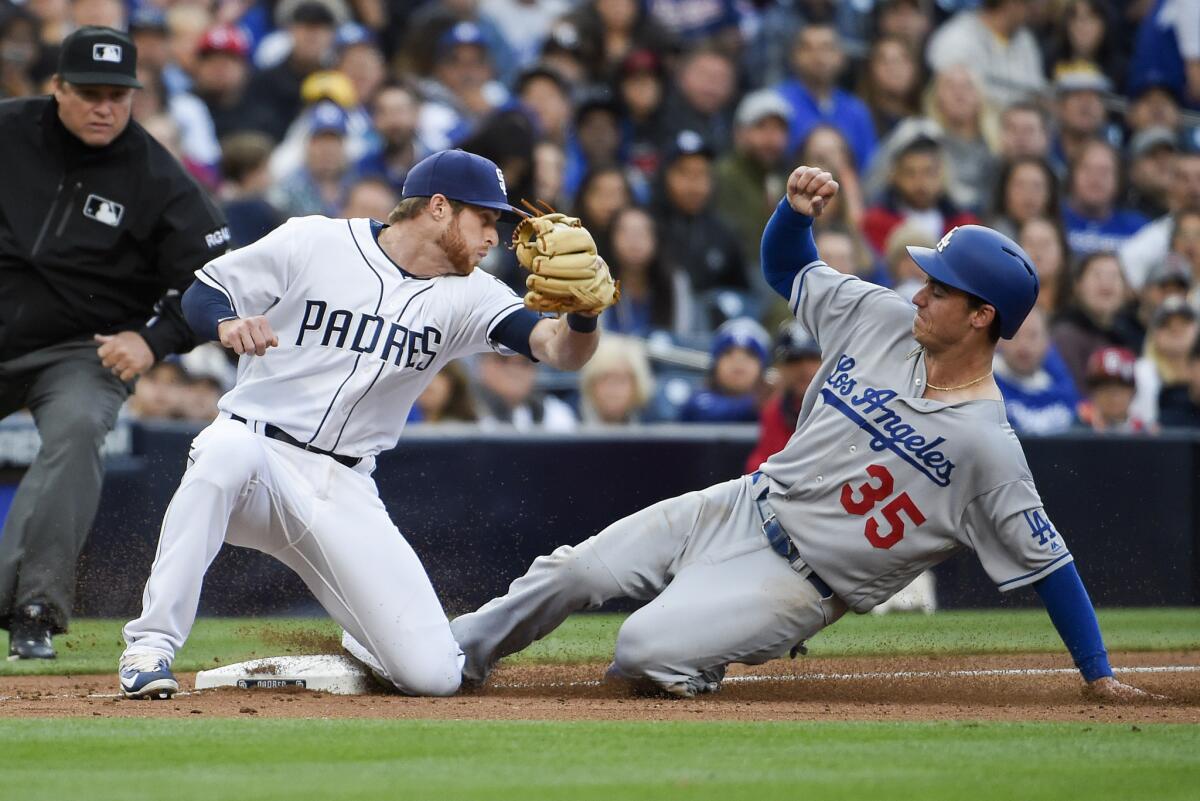
Impressed by Clay’s pedigree, Woods offered him a chance to coach the junior varsity team. Woods soon met Clay’s preteen son. “Cody wasn’t very big, but he had a beautiful swing,” Woods said. “And he was a baseball rat.”
Clay coached his son’s team when they went to the Little League World Series in 2007, but Cody was still several years from stardom. He spent his sophomore season at Hamilton on the JV squad. It wasn’t until his junior year that he sprouted above 6 feet. Even so, he remained more bone than muscle.
Before the draft in 2013, Oakland invited Bellinger to a showcase. Watching in the stands was Farhan Zaidi, who would replace Colletti as the Dodgers general manager after the 2014 season. “He was kind of like a beanpole,” Zaidi said. “But he got up there and he swung the bat with bad intentions.”
Bellinger was a difficult prospect to project. As a first baseman, his future depended on his slugging. During batting practice, Bellinger felt he could put on a show. But during games, opposing pitchers kept him contained inside the ballpark — even if they could not keep him off the bases.
Scouts felt bearish on his future. “Some of the guys have admitted it to me, ‘We didn’t project him to be a power guy. We didn’t know how that body was going to fill out,’” Woods said.
Bellinger slipped to the fourth round. Colletti does not cast his scouting department as a collection of soothsayers. He admitted he did not project Bellinger to transform into a power hitter. But the organization felt entranced by his smoothness at first base and his athleticism. The team offered him a $700,000 signing bonus, nearly $300,000 above the recommended amount for the 124th pick.
Assigned to the rookie ball in the Arizona League, Bellinger homered once in 47 games. When he moved up to the Class-A Pioneer League in 2014, he hit .312, but still only homered three times.
“When I was drafted, I didn’t know any better,” Bellinger said. “I didn’t think I had to hit for power.”
That changed in 2015, when the new front office challenged him by sending him to Class-A Rancho Cucamonga. Bellinger was a teenager in the California League, where the average hitter was closer to 23. He responded by bashing 30 homers and 33 doubles, establishing himself among the organization’s most promising assets.
The surge resulted in part because of maturity. He had grown to 6-foot-4 and gained comfort inside his frame. He also adjusted his stance, tilting his bat toward the pitcher before each pitch, which added torque to his swing and helped generate back-spin on balls. Kapler insisted that the organization could not claim credit for the transformation — the credit belonged to Bellinger.
“Belly is not a development story,” Kapler said. “He is a talent story. He is a guy who steps in the batter’s box and everything pretty much looks right.”
That same season, Bellinger expanded his defensive portfolio beyond first base. The mixture of graceful movement in the field and enhanced hand-eye coordination convinced the Dodgers to test Bellinger in the outfield. For Bellinger, who had dabbled there in high school, the assignment felt familiar.
Bellinger maintained his production in 2016. Playing in the double-A Texas League, considered a proving ground for future big-leaguers, he cut his strikeout from 27.6% to 20.2%. He swatted 23 homers and posted a .843 on-base-plus-slugging percentage. He excelled during a season-ending stint with triple-A Oklahoma City.
“That’s when it was like, OK, this guy might be ready sooner than we think,” Zaidi said.
The versatility proved crucial in his arrival in the majors. The Dodgers called Bellinger up to play the outfield when Joc Pederson sustained an injured groin. His success allowed the team to shut down ailing first baseman Adrian Gonzalez and keep Bellinger on the roster. When Andrew Toles suffered a torn anterior cruciate ligament, Bellinger shifted back to the outfield.
This past Tuesday, Bellinger dealt with the reality of his newfound prominence. Inside the Dodgers clubhouse, cameras showed him preparing for an on-field interview with MLB Network. A technician fitted him with equipment. The sight amused his teammates.
“Do you get anything for being player of the week?” reliever Josh Fields asked.
“A watch,” cracked fellow reliever Chris Hatcher.
“A Rolex?” Fields said.
As Bellinger fiddled with the clip-on microphone, Seager walked through the room. He looked up at the television and grinned. It was not long ago, Seager mused, that he was the youthful, bashful budding star.
Seager learned to adjust to the fame. Bellinger will, too.
“We’re just hoping he stays as consistent as possible,” Seager said. “He’s handling it as best he can. He’s just got to keep figuring it out, basically.”
Twitter: @McCulloughTimes
More to Read
Are you a true-blue fan?
Get our Dodgers Dugout newsletter for insights, news and much more.
You may occasionally receive promotional content from the Los Angeles Times.
